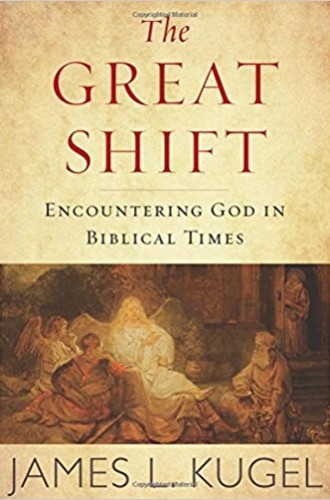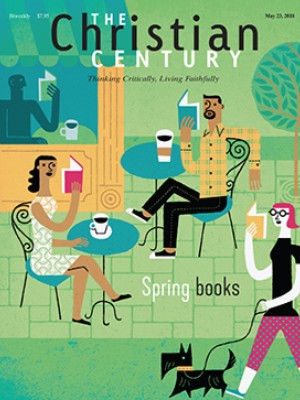Take & read: New books in Old Testament
Does biblical scholarship still matter for the life of faith?

Recently I attended a meeting of biblical scholars from a variety of academic settings in the United States and Canada to discuss what many perceive as a crisis in biblical studies. Threats to the disciplined, academic study of the Bible come from a number of quarters. On the one hand, fewer and fewer institutions in higher education are hiring Bible scholars as apathy toward, and even distrust of, religious traditions pervade a secularizing culture. On the other hand, some powerful expressions of Christianity in North America (and elsewhere) deeply distrust the academic study of the Bible and instead embrace naive and often damaging interpretations of scripture.
The Bible scholars at this gathering—all committed to the academic study of the Bible for the life of faith and all active participants in living faith communities—have decided to respond to this moment of stress not by issuing a manifesto or holding a conference, but by creating testimonies of how their own rigorous academic study of the Bible has nurtured their faith over the course of their lives and within their faith communities, sometimes in complex and challenging ways. One aspect of these testimonies is the sense that scholars, in the way they have embraced the historical critical project as an end in itself, have exacerbated the problems we now face. It’s not that we think that we alone can turn the course of these powerful forces working against serious study of the Bible. Far from it! Rather, at this stressful juncture we feel called to witness to the power of informed scriptural interpretation for the flourishing of self, faith communities, and the world.
Read our latest issue or browse back issues.
I mention this meeting because some of the titles emerging in the study of the Old Testament (and New Testament as well) speak to this context, with varying degrees of explicitness. In The Great Shift: Encountering God in Biblical Times (Houghton Mifflin Harcourt), James L. Kugel argues—in conversation with neuroscience, anthropology, and other disciplines—that in ancient Israel (and the ancient world more broadly) the self was understood differently from the modern self that is operative today. The biblical figures reflect a self with a “semipermeable mind,” one that is open to the divine in ways largely closed off to us moderns. We are stunted in some ways, unable to find the opening within ourselves to the divine. Kugel’s argument is a kind of prequel to Charles Taylor’s Sources of the Self, which traced the development of the modern self through the Greeks and on to Augustine and the Western tradition. For Kugel, this argument has existential significance. He finds a kindred spirit in Flannery O’Connor, who prayed, “Dear God, I cannot love Thee the way I want to. You are the slim crescent of a moon that I see and my self is the earth’s shadow that keeps me from seeing all the moon. . . . I do not know you God because I am in the way. Please help me to push myself aside.”
If some of the wounds felt within biblical studies are self-inflicted, Brad E. Kelle’s Telling the Old Testament Story: God’s Mission and God’s People (Abingdon) comes as a balm for those wounds. Kelle, who teaches at Point Loma Nazarene University, offers this book for use in introductory courses in universities and seminaries. But even if readers have already ticked that box, it may be that the glories of their earliest encounters with the long testament have faded and a reintroduction is in order. In any case, many will find themselves blessed to be immersed in Kelle’s account of God’s story. The mission of God, and of God’s people as they are taken up into that divine mission, Kelle argues, is the restoration of creation to right relationship. The Old Testament is “the story of God’s mission to restore creation, and the calling, creation, and formation of God’s people to be the instrument to participate in that mission.” This account of the Old Testament takes seriously humanity’s interconnectedness with the rest of creation as well as with God. It inspires readers to engage, or reengage, with the passionate creation-loving God to which the Old Testament story testifies.
Part of the mission of restoring creation includes being honest about the problems that pervade it. For almost two decades I have taught a course called Gender and the Old Testament (formerly Women in the Old Testament). This year, in the context of #MeToo, enrollment and interest in the topic are at an all-time high. Questions that had seemed long settled are now open for debate. Rape, for example, is defined by some as sex whenever there is a significant power imbalance between the two parties, even if the woman—usually, though not always, it is a woman—did not actually resist. If the context involves a power differential, then it is rape. So, for example, some students argue that it is clear that David raped Bathsheba. For others, though, context alone is not enough to make such determinations. (In my judgment, the text does not give us enough information.) Do women, in particular, have no agency at all in contexts of unbalanced power? Are they, in effect, minors?
Several new studies consider women’s agency. In Claiming Her Dignity: Female Resistance in the Old Testament (Liturgical Press), L. Juliana Claassens goes beyond earlier books on women in the Bible by addressing gender issues in our current context. She understands many modern manifestations of precarity, for example, to be a form of gendered violence. Different in methodology but equally stimulating is Wilda C. Gafney’s Womanist Midrash: A Reintroduction to the Women of the Torah and the Throne (Westminster John Knox). Gafney engages in the Jewish tradition of midrashic interpretation while drawing upon African American preaching traditions, resulting in often startling (even to those who have been immersed in the field) reinterpretations of Old Testament women. The tragic but neglected story of Cozbi in Numbers 25 is one such story; the reader can imagine an entire opera devoted to the life and death of this young woman.
Very different methodologically but of equal interest is Cynthia R. Chapman’s The House of the Mother: The Social Roles of Maternal Kin in Biblical Hebrew Narrative and Poetry (Yale University Press). Through a rigorously disciplined historical investigation, Chapman argues that in polygynous households, siblings of the same mother (“the house of the mother”) worked together to promote one another’s interests. “The relationships within the house of the mother were characterized by heightened emotion, public displays of physical affection, and lifelong loyalty to one another.” A nuanced and compelling scholarly study, Chapman’s work overturns some of the conventional understandings of the extent of hegemonic patriarchal power and social influence in the Bible.
Martti Nissinen includes a chapter on gender in his hefty tome Ancient Prophecy: Near Eastern, Biblical, and Greek Perspectives (Oxford University Press). Nissinen makes significant progress in the study of ancient prophecy by proposing changes to the way biblical prophecy is understood and by studying Greek prophecy through the same methodological lenses. He claims that biblical prophecy is, like other ancient Near Eastern prophecy, a form of divination. In the ancient world Nissinen studies, within “the male-dominated, hierarchical society, the prophetic agency could be claimed and enacted by male and non-male persons alike, and the sources show no drastic differences between prophetic agencies of male and non-male persons.”
Lest we become too giddy, however, Nissinen notes that women’s prophetic utterances were more often subject to fact-checking than men’s: “At Mari, for example, the words pronounced by a female prophet seem to have been confirmed by technical divination [e.g., extispicy and augury, which were always practiced by men in Mesopotamia] more often than those spoken by male prophets.” As Qoheleth says, there is nothing new under the sun. Yet Nissinen ends on a more promising note. Women’s roles as prophets had a carryover effect into a more expanded agency outside of instrumental prophetic roles. “Both male and non-male prophets could execute an independent and transforming actorship in their societies,” he concludes. If it was true in the ancient world, perhaps there is hope for us yet.












